Thames Path - Culham to Cholsey
21 February 2009
Mid February, and it is time for Lucy to go to the Maidenhead dog show at
Reading. In 2007 this allowed Stephen to walk from Reading to Henley
(with Henry); in 2008
from Cholsey to Reading (with George); and this year from Culham to Cholsey
(with George), the only bit of
the Thames between Oxford and Greenwich he hadn't yet walked. What will we do
next year?
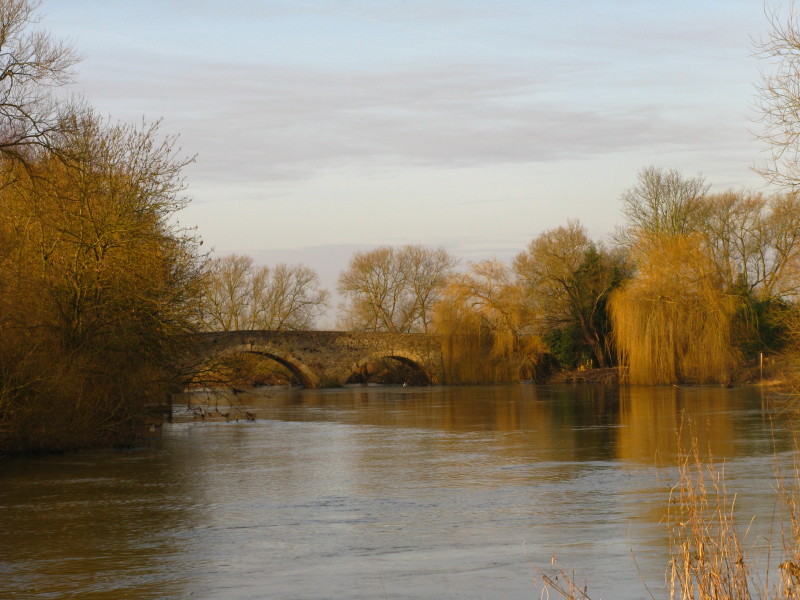
So, shortly after being dropped at Culham, a glance back to Sutton Bridge:
dating from the early 1800s, it carries the road over the river; a second bridge
carries it over the lock cut that we have just walked along.
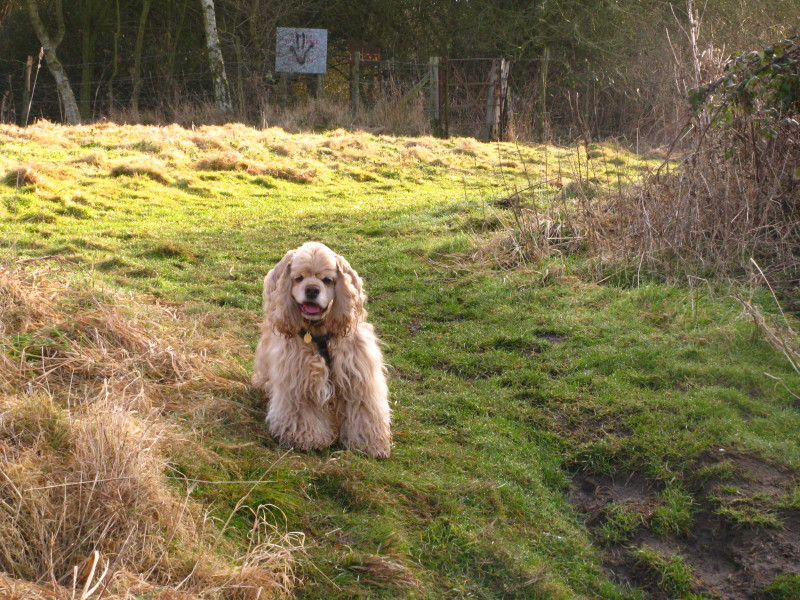
A fairly clean George: that was not to last
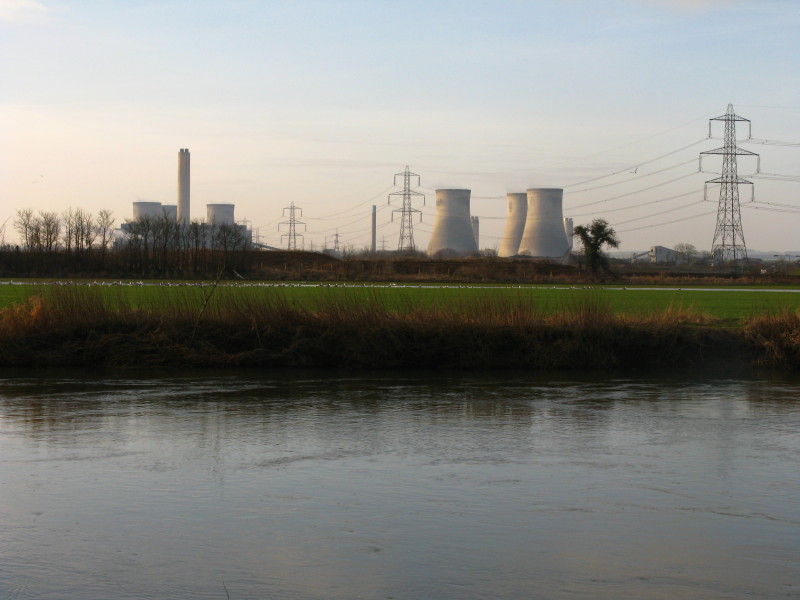
Looking over the river to Didcot power station
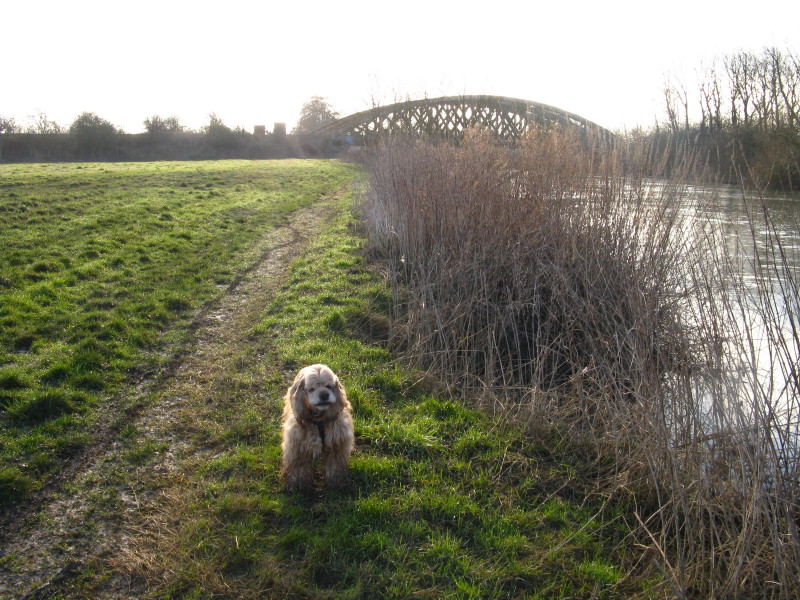
A railway bridge carries the line from Didcot to Oxford. George is becomming
muddier, and the gently but persistently muddy path shows why. There is a lot of
silt on the path from where the river has recently flooded.
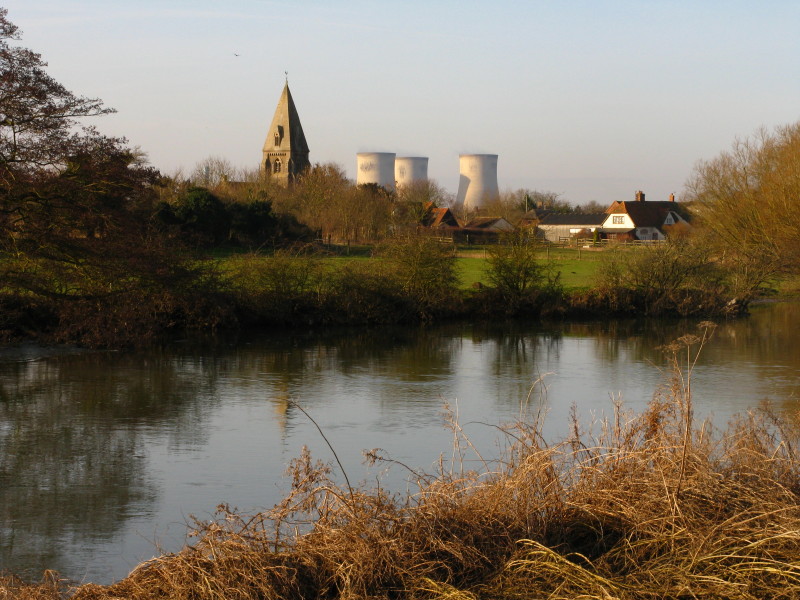
Another view of Didcot power station past the spire of Appleford church
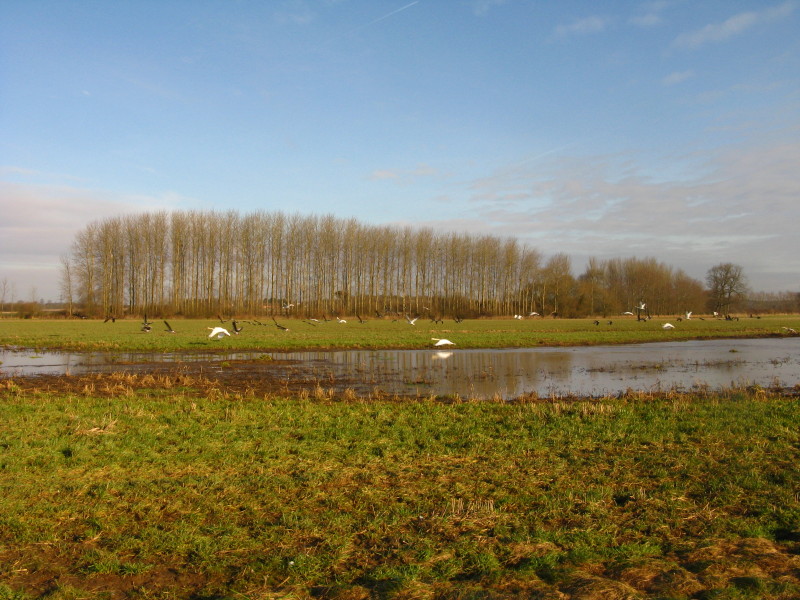
A large number of birds were resting in the flooded field, but almost all took
off as we approached
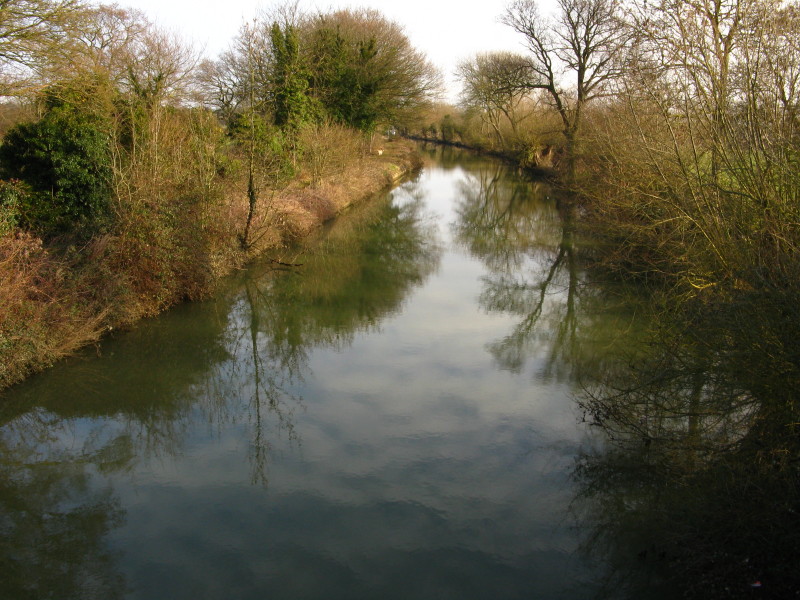
Looking down on the lock cut as it approaches Clifton lock
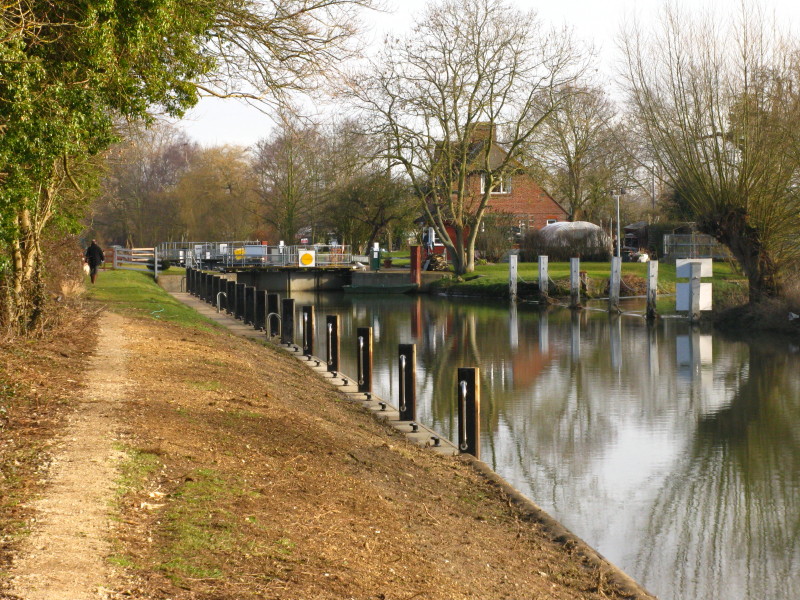
Clifton lock
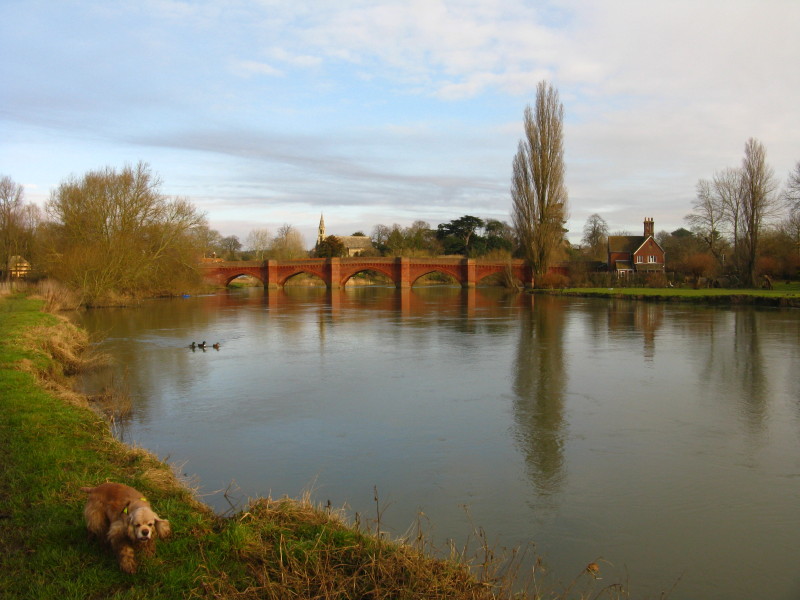
The red brick gothic bridge at Clifton Hampden, designed by George Gilbert
Scott. The bridge replaced a ferry here in 1864. To me the bridge will forever
be associated with a music teacher at school, Mr Bainbridge, who, travelling
downstream in flood conditions, panicked and put the boat into astern: it swung
round and was swept sideways across one of the arches where it was firmly held.
The other boat in our party was ahead, and moored below the bridge to a "No
mooring" sign, and I recall heads popping over the parapet to look at us on the
boat against the bridge. Quite how we got away, I don't now recall.
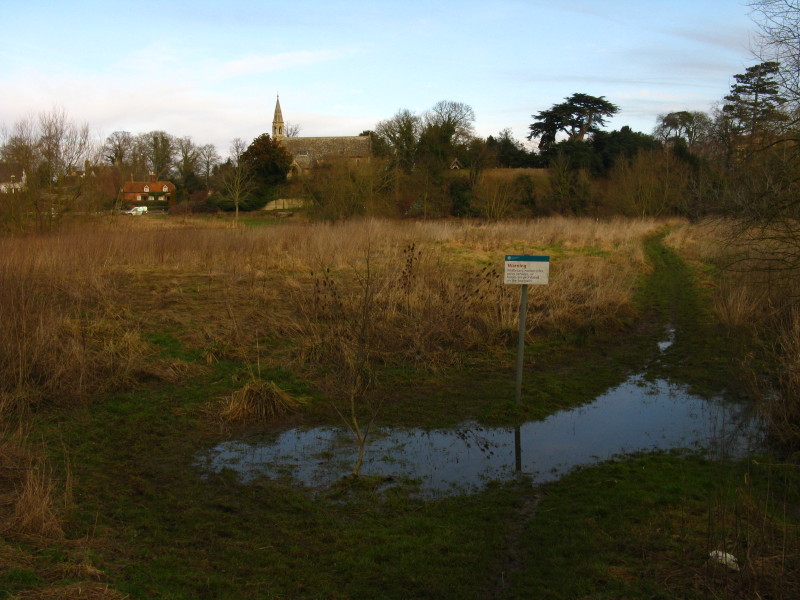
Across the bridge, we gain the south bank, which is a little damp. Across the
river is the church perched on a bluff: it was restored by George Gilbert Scott.
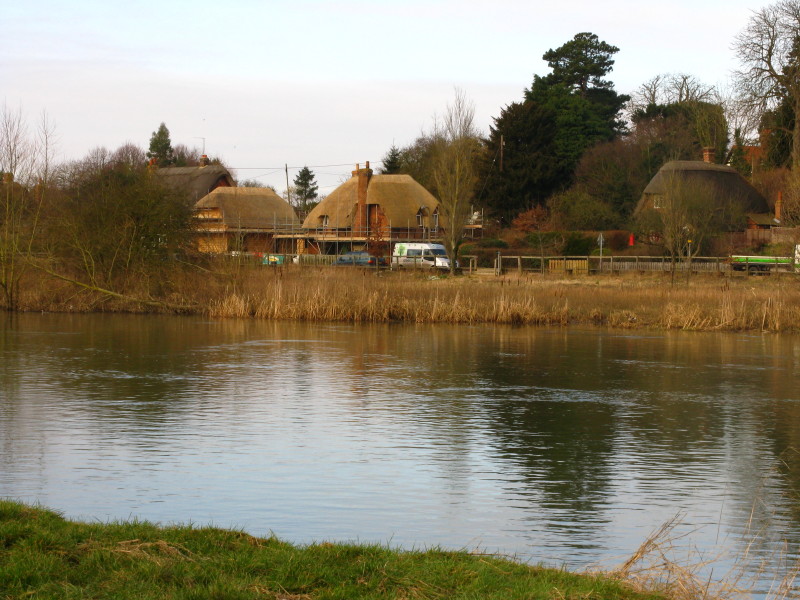
Thatched cottages in Clifton Hampden, two of which look newly thatched
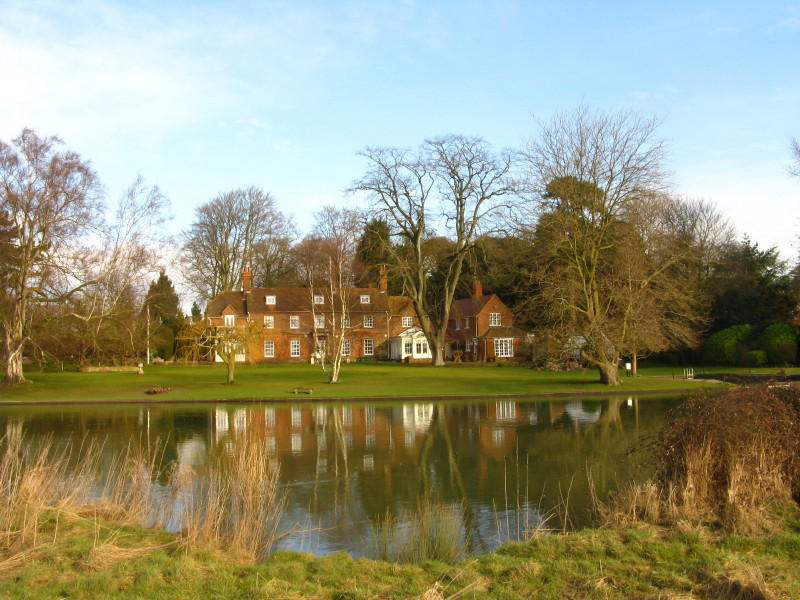
One of the expensive riverside houses of Butcot
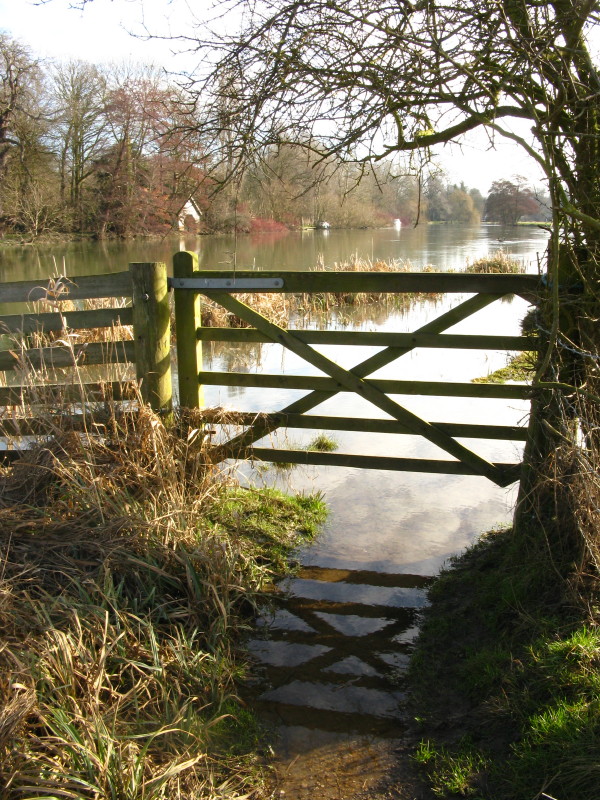
A damp bit of the path.
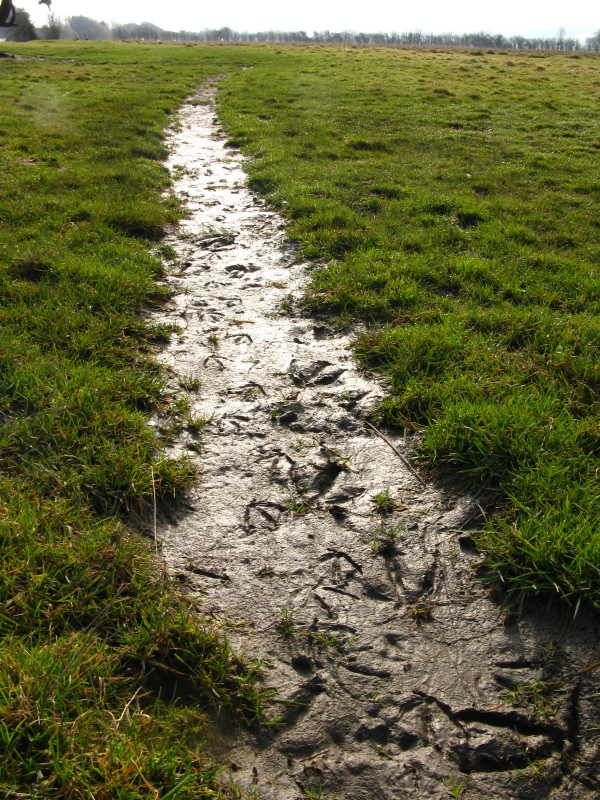
Canada Geese footprints in the mud (I think)
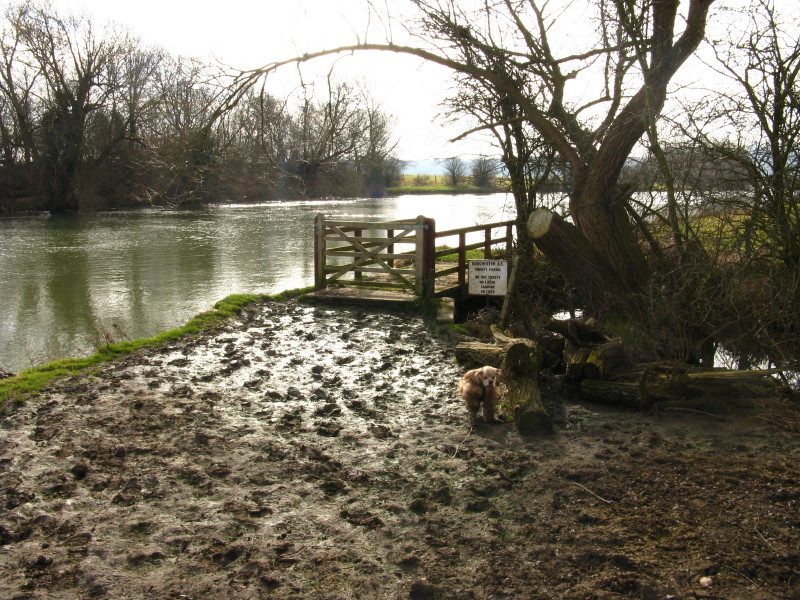
Much of the towpath was reasonably grassy, though still damp and slightly muddy,
but whenever the path is narrowed to go through a gate, there is proper mud.
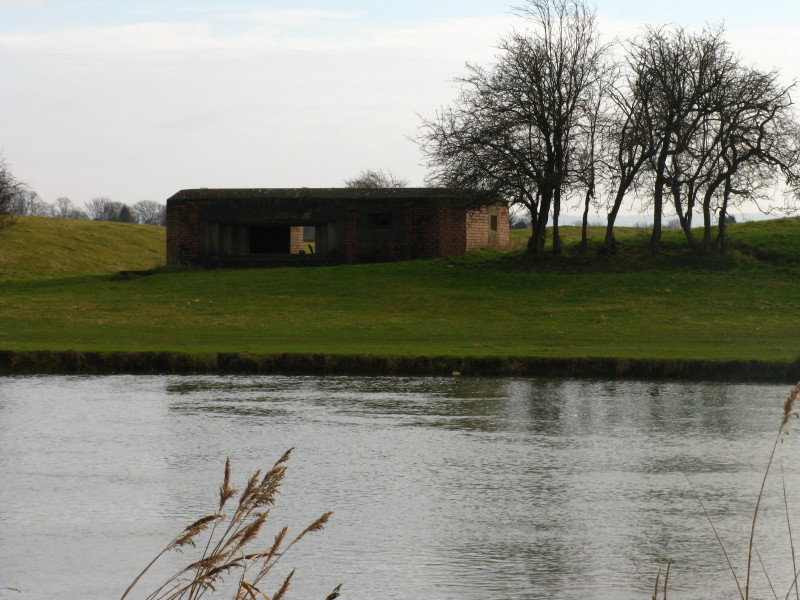
A very large pillbox, recalling that the Thames and Kennet & Avon was to be a
fall-back line of defence for when the Germans invaded in the Second World War.
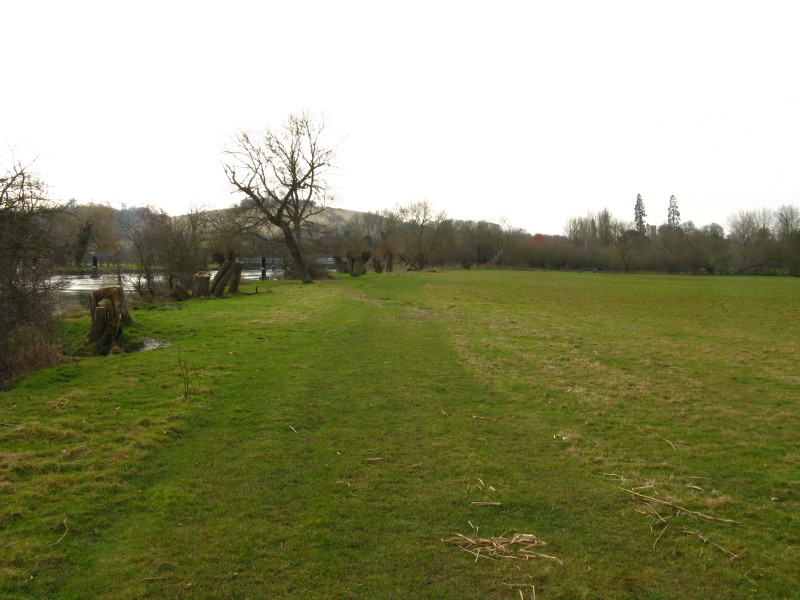
The hill of Wittenham Clumps has been visible for a long time now, originally at
90° on our right, and now after three kilometres of a long sweeping curve, lies
directly ahead, meaning we are approaching Day's Lock
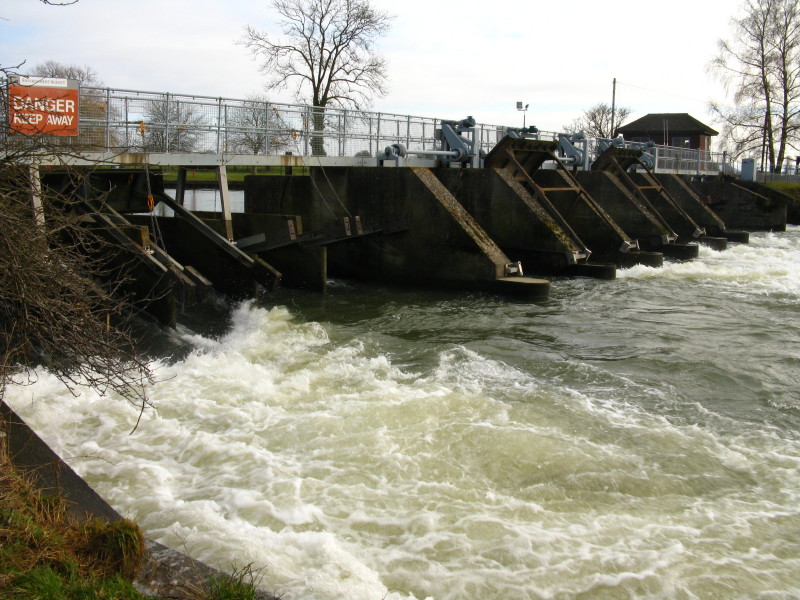
Our way lies across the weir and then the lock gates
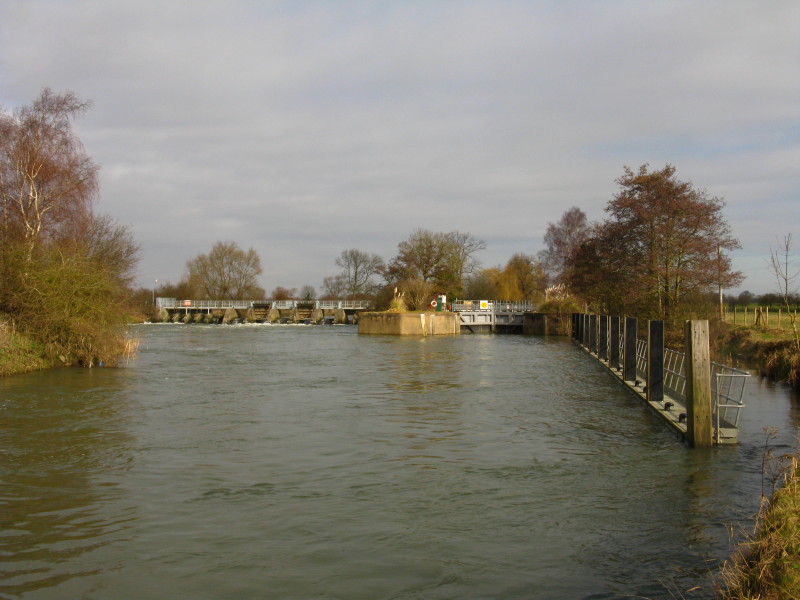
Perched on a wall under Little Wittenham Bridge for elevenses, a look back to
Day's Lock and its weir
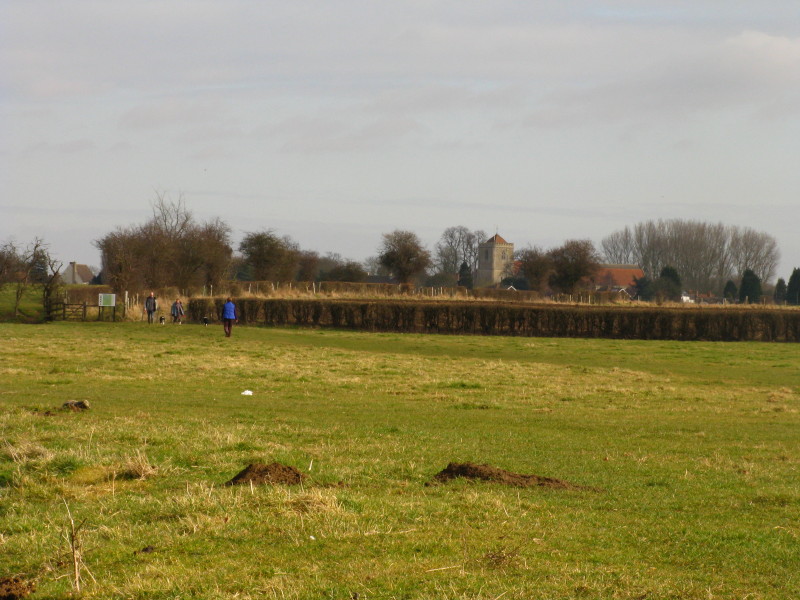
And from the same point, a view to Dorchester
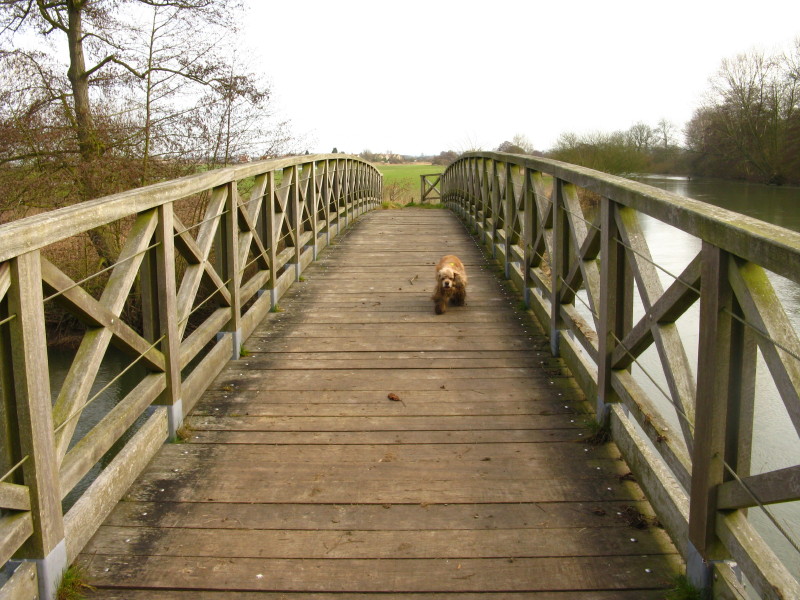
George on the curving wooden bridge over the River Thame as it enters the Thames
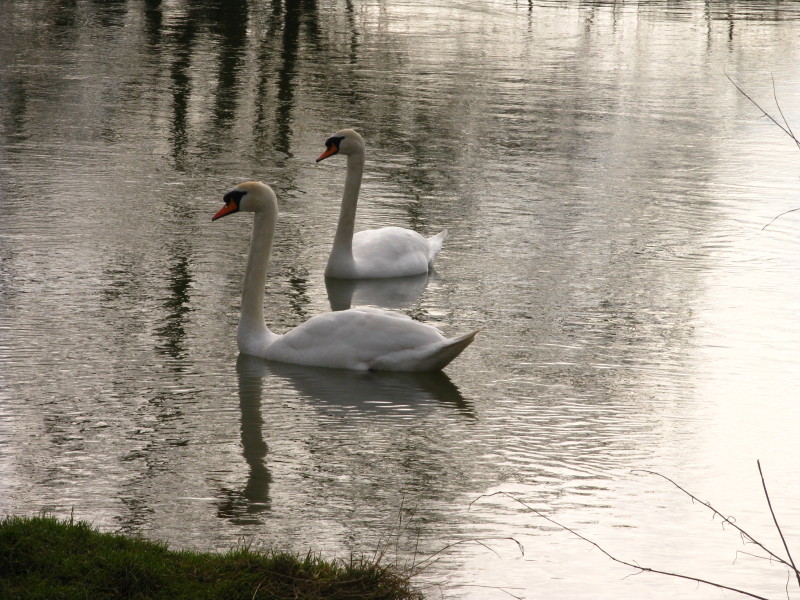
Reflected swans. Soon after, we had to leave the riverside as the towpath
crosses to the other side by a long defunct ferry, leaving the Thames Path to
make its way as best it can.
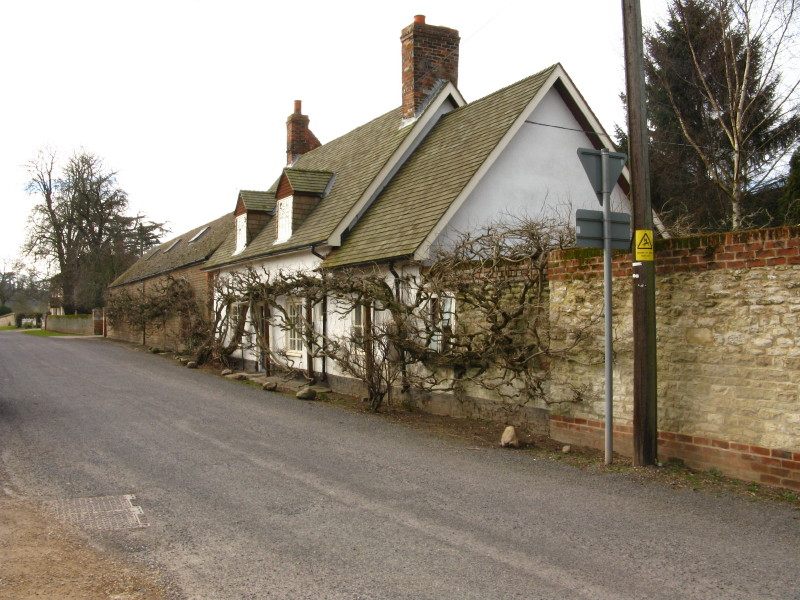
After a walk along the A423 where almost all the traffic was doing significantly
in excess of the speed limit, we turn off down the quiet Wharf Road. On the
right is Wisteria Cottage - that wisteria is a single plant 50 metres long, and
must be spectacular in bloom.

An early first lunch at Shillingford wharf: George watches the fisherman by the
thatched boathouse of Shillingford Court. We turn away from the river again,
taking a walled path and then a quiet road.
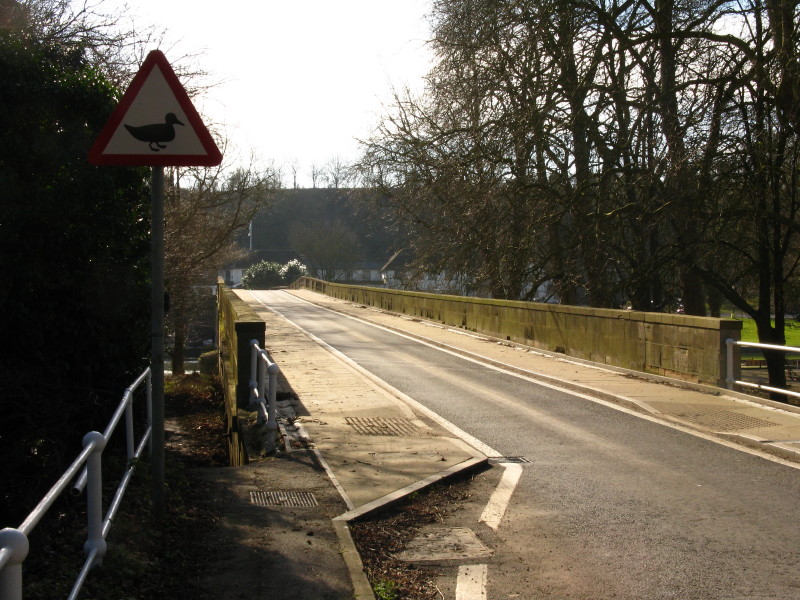
Watch out for ducks on Shillingford Bridge. Our way lies down to its left to
regain the riverside.
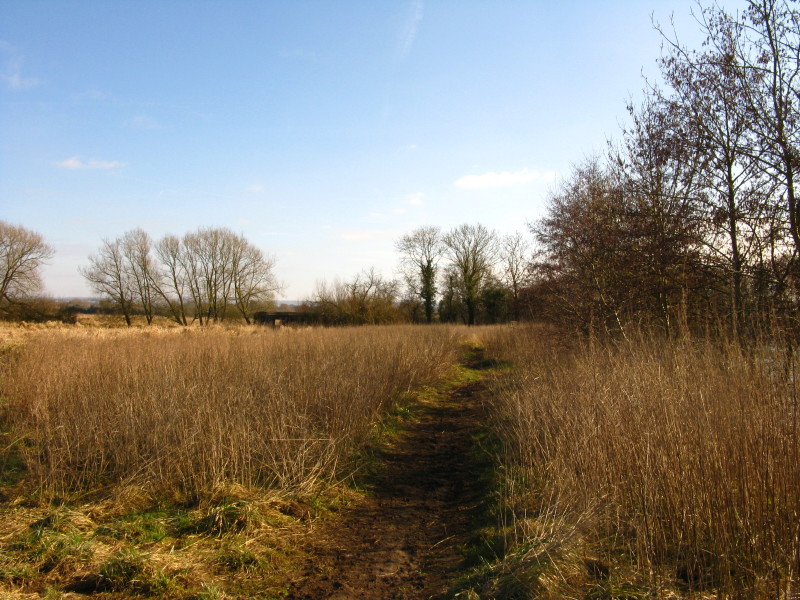
The day is lovely, eventually reaching about 12°C - the first t-shirt walk of
the year.
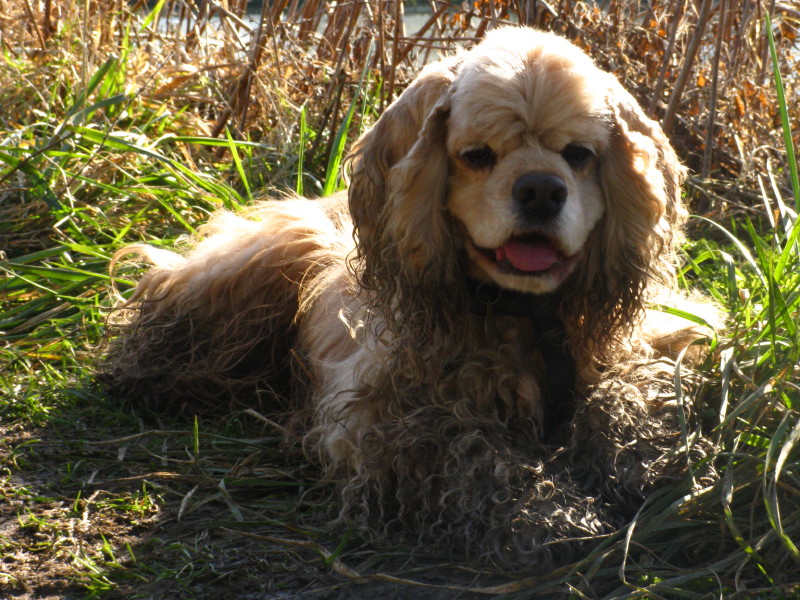
A muddy and tangled but cheerful George
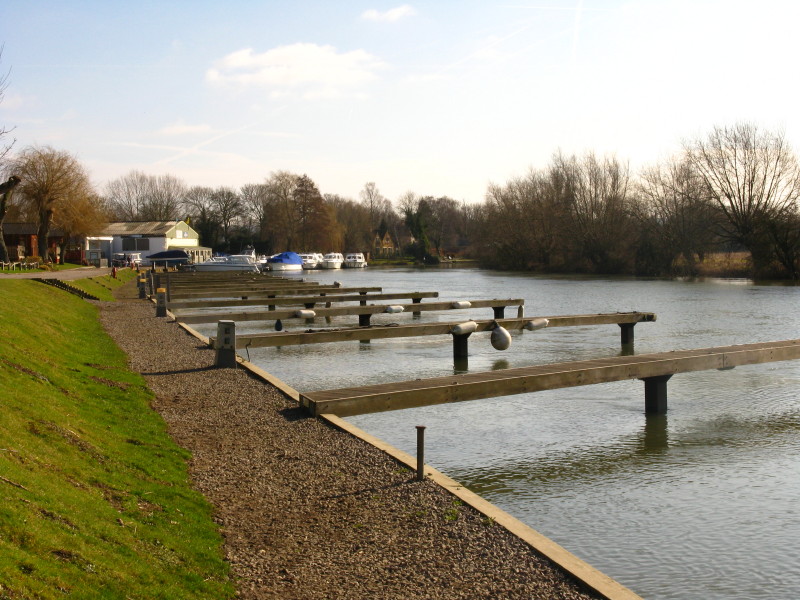
Benson marina. It was from here that Lucy and I got our first boat together in
August 1997 - it rained every day but we had a great time, and as of today we've
had another 18 boating holidays since.
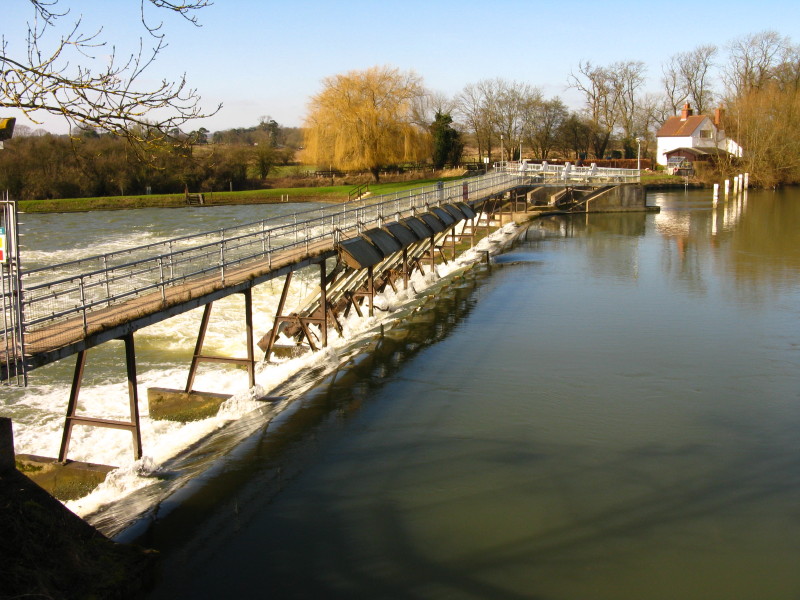
After a little quiet road walking we reach Benson weir, which the Thames Path
crosses
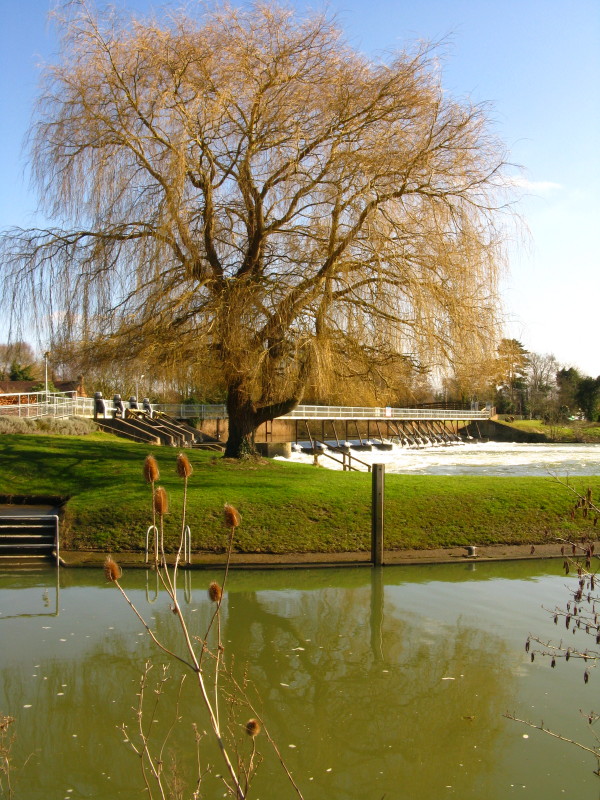
Looking back at Benson weir
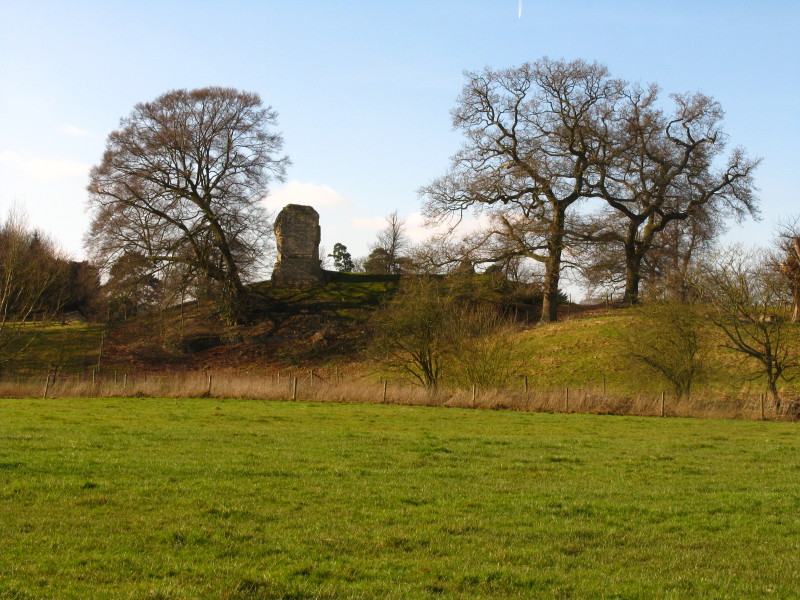
The stump is all that remains of Wallingford Castle: it supported the king in
the Civil War and was ordered demolished by Oliver Cromwell.
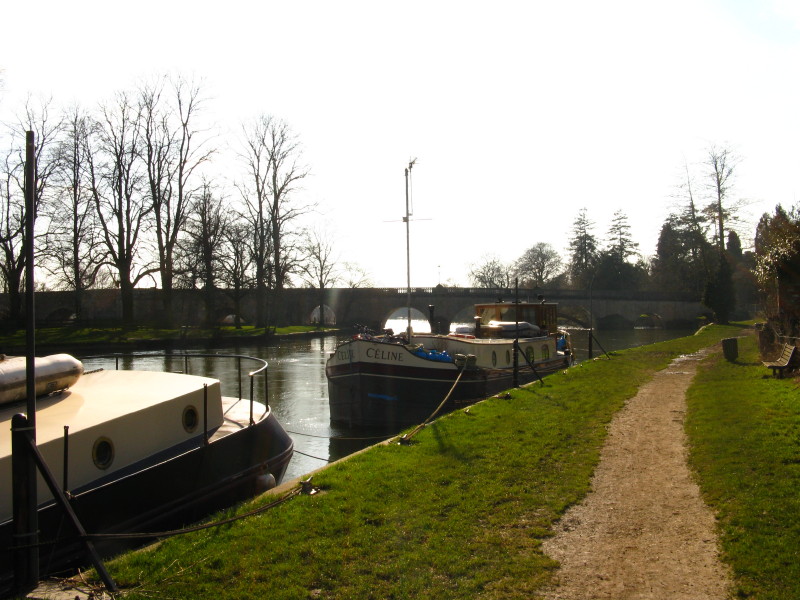
Approaching Wallingford Bridge which has a total of 22 arches. Repairs and
amendments (including a drawbridge inserted during the Civil War and then
replaced with fresh arches) mean that it is a bit of a hotch potch of different
sized arches, which vary in age from the 13th century to 1812.
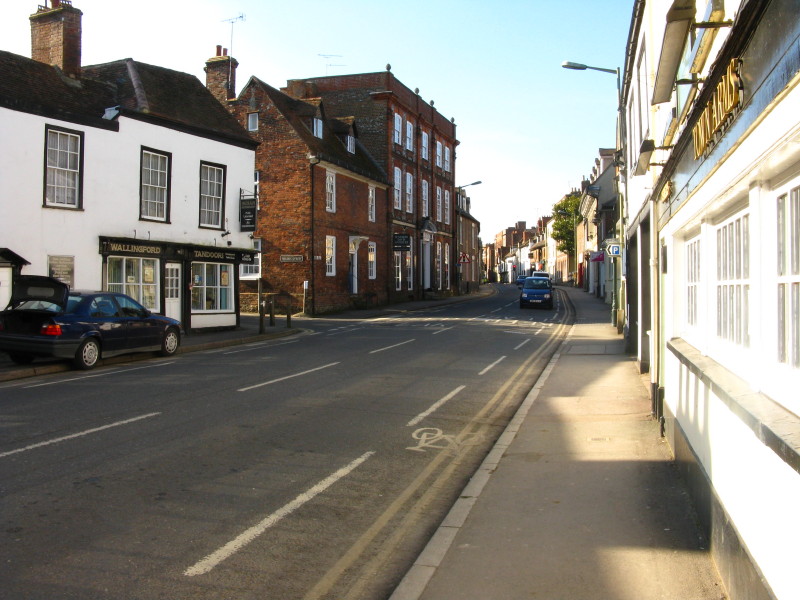
Wallingford High Street: our way lies left past the tandoori along Thames Street
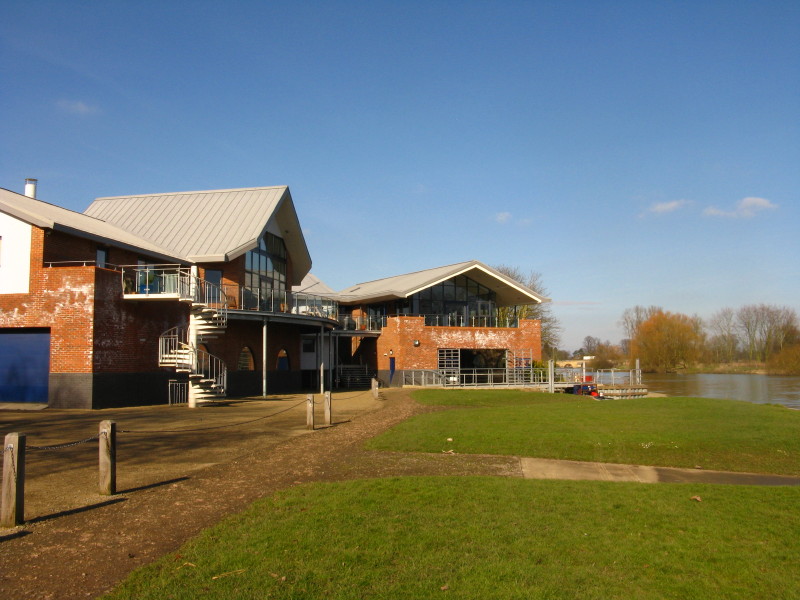
Back on the riverside, a look at the Oxford University Boat Club buildings.
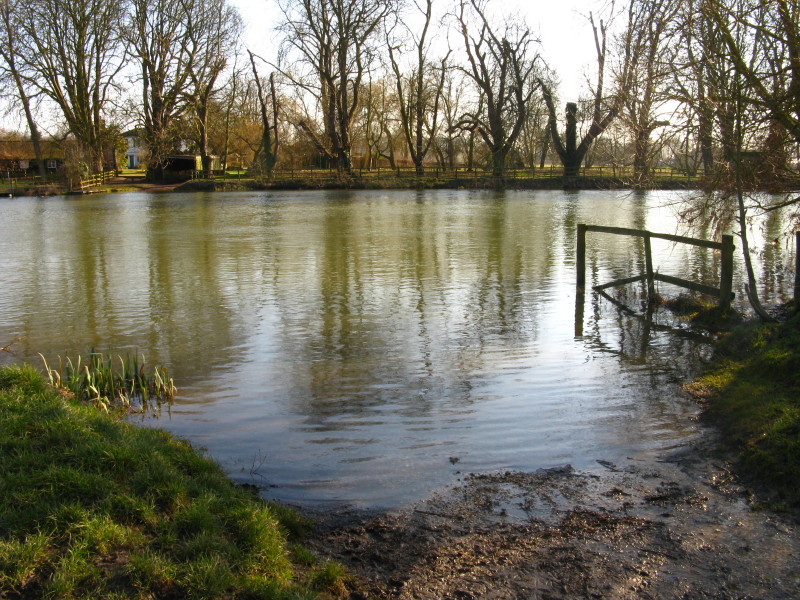
From Wallingford it is an uneventful walk through meadows to this point at
Cholsey, where the towpath again used to cross by way of a ferry which is no
more. The Thames Path continues on this bank, but this is where we started a
walk last year, and so it is time to turn right up Papist Way to Lucy with the
waiting car.
Total 22.7km, (22.5km on the Path) in 5 hours 35 mins.
 

|





































